NEP Norway takes the Holmenkollen Ski Festival to new heights and extremes
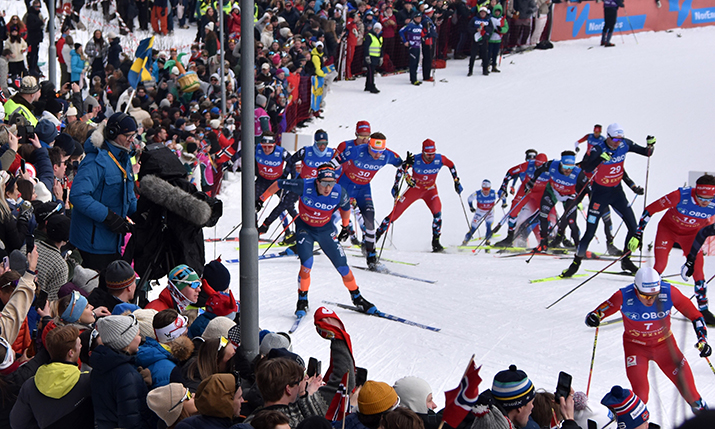
NRK camera capturing a climb in front of large crowds in Saturday’s Men’s 50km Cross Country race
The FIS World Cup Cross Country Skiing, Ski Jumping and Nordic Combined at the Holmenkollen Ski Festival in Norway took place last weekend from 9 to 12 March.
This event was a huge effort by host broadcaster, NRK of Norway, which used its own OB units as well as being supported by technical provider, NEP Norway.
The Holmenkollen Ski Festival is wildly popular in Norway, where people are born with skis on the their feet an inherent love of winter sports. This is one of the biggest OBs of the year in Norway, with cameras spread over a wide area to cover the 8.3 killometre lap Cross Country course and also the Holmenkollen ski jumping hill, which provides extremely impressive coverage.
“We have such great experiences doing these kind of productions, that whatever challenge we face, we always manage to deliver the “wow”. It’s just a big, beautiful event to make the unity of the country. That’s what Norwegians are. We love our ski stuff. We’re born with it. I’m born with it!”
This event also had the first-ever FIS Women’s 50 kilometre Cross Country race on Sunday – racing the same distance as Saturday’s Men’s race – and saw a popular home Norwegian winner in Ragnhild Haga.
The FIS Ski-Jumping is also the first leg of the ‘Raw Air’ tournament, covering three hills in Norway this month. This Holmenkollen 134 metre hill was rebuilt and reopened in 2010 and staged the World Championships in 2011.
Tossief Jafri, head of sales at NEP Norway and project manager for the Holmenkollen Ski Festival, spoke to SVG Europe about the broadcast of the event, but first commented: “Any ski event is a huge event in Norway, [but combine] ski jumping, and cross country and it’s a really big day for Norway. A big, beautiful event which unites the nation.
“There’s passion and love for the sport and respect for the people behind the sport. It makes it amazing to watch on TV and is beautiful.”
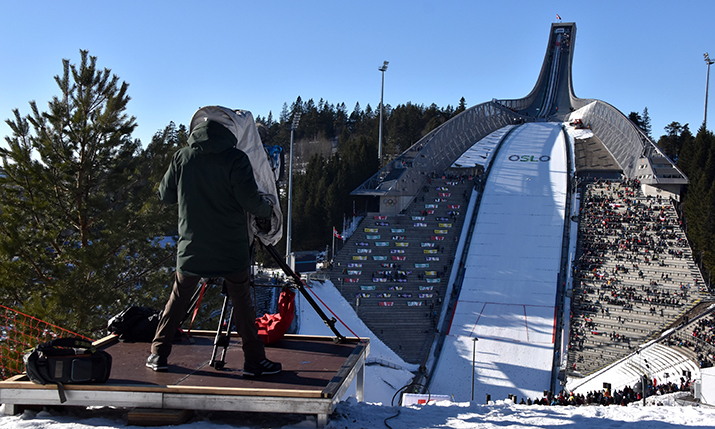
Camera capturing a long shot of the Holmenkollen ski-jump
Capturing juicy pictures
NEP had three OB trucks on site and NRK had a further two trucks of its own, Host and National, on location. Adds Jafri: “Our client has their own trucks, because it’s a national broadcaster in Norway, so we had a wide of range of trucks to be able to cover such a big event.”
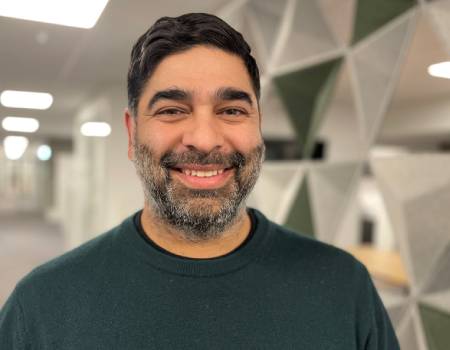
Tossief Jafri, head of sales at NEP Norway
He comments on the cameras used for the Festival: “We used EVS to get all the footage recorded. We had five EVS’s in total, with three of them supported by NEP. We also had two super slow motion cameras. The slow mo cameras were capturing those really juicy pictures that we like! So you’re really in there and capturing the moment in slow motion, especially on the ski jump; you want to see that in slow mo, especially when they’re in the air.
“Then we used four of the big, large lenses, called 90x lenses. They were capturing those beautiful close ups of the cross country guys and the women and the people jumping, and giving you those beautiful amazing shots.
“And then we used one wireless camera. Wireless cameras capture literally in the moment where the audience is. We also used it to interview the [athletes] who were skiing, and also the cross country. We had a lot of famous reporters that were working on this event.”
NEP Norway also used a Polecam to capture the up close action at the top of the ski jumps, where the space available is narrow, but the facial expressions of the athletes are a must see as they prepare to jump.
“On the ski jump, we used around 15 cameras, and on the cross-country event, we have around 30 cameras. So it’s quite a large amount of cameras to be able to cover such a big event,” adds Jafri.
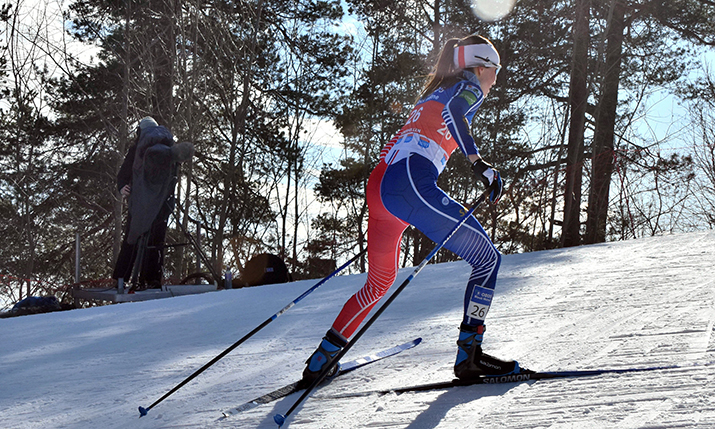
Steep climb in the Women’s Nordic Combined 5km Cross Country
Avoiding shaky shots
There are a myriad of challenges for this event, but the temperature is the main one says Jafri: “So the challenge we face is the cold weather, which is somewhere around -10 degrees Celsius. It’s very cold, especially in the morning, so our camera crew uses heating pads inside their gloves and actually on the feet as well, on the inside of their shoes, because they’re standing there for hours and hours working and getting those beautiful shots; they have to keep themselves warm. It doesn’t matter how well dressed you are, the part that gets cold first is the fingers and the toes.
“So we’re making sure that the people who are working there are, first of all, not freezing because as soon as they freeze, they’re starting to get shaky shots; it’s absolutely amazing how hard the camera people work.
“Then we do the same thing with the cameras. To protect our cameras, we use something called arctic rain covers, for rain and snow. As soon as the sun comes, then obviously all the covers goes away, but it’s just a way to protect the equipment because overnight they are outside.
“The reason why they stay outside is so they are declimatised. If you take [a camera indoors and outdoors] it will be a big temperature difference for the equipment, and we would then face challenges with the camera not working. So you just protect in such a way and it’s ready to go in the morning.”
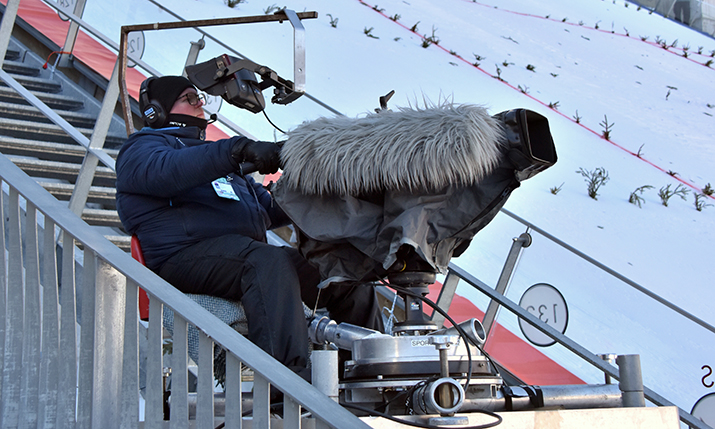
Camera with independent viewfinder for rapid pan and tilt
Sound of powder
On the audio, Jafri notes that NEP Norway does and has historically used sampler effects for this event. He explains: “The sampler effects give the audience a very unique experience, because it’s very challenging to record [certain sounds on the slopes], especially when the ski jumper jumps; that “swoosh” sound. And then when they land, it’s very challenging to record that on live. So we do swoosh sounds, and those have been used for many years, those sound effects. We have to add it so the viewers get that “wow!”.”
He adds that the sounds used on the live action have been previously recorded on the actual slopes at Holmenkollen, at times where NEP Norway has focused on capturing sound specifically for this purpose.
He notes: “We’ve been doing this event for many years, so you make a bank of sound effects. When it’s cross country and especially on the jump because it’s very challenging to get that “swoosh” sound and the landing sound because you cannot be too close when they are landing, because of the security and stuff like that.”
“We still use microphones around the arena anyway, but that’s the environment sound from the audience; you want to get that sound too, where people are shouting.”
NEP Norway also worked with its colleagues from NEP Germany with the addition of onsite highlights editing facilities in an NEP Germany truck. Explains Jafri: “This was an invention with our friends in NEP Germany; we had editors live on site, I think there were three editors, in a truck just literally working on highlights.
“They were getting footage in and they were sitting there and editing and pushing the content to the truck so that it can be aired. So that’s a very nice way that we have a facility vehicle where we can literally bring it onsite. And then when they’re done for the day, they’re ready for the next day.”
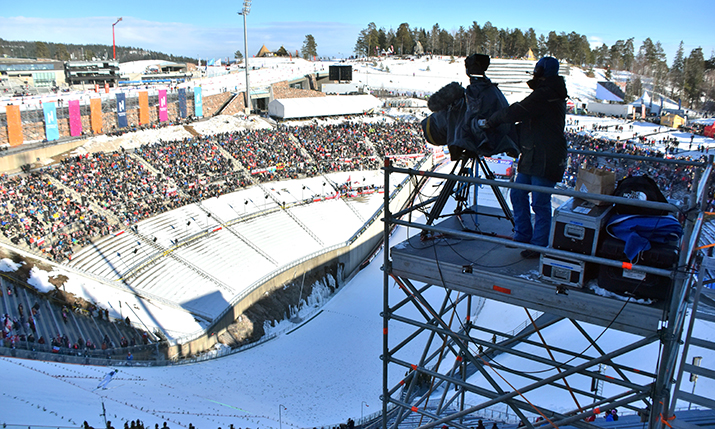
NEP Norway camera for NRK capturing the ski jump landing
Delivering the “wow!”
NEP Norway also made sure this was a green production, in line with its client’s goals and ambitions, and its own. NEP Norway is part of a Norwegian environmental management certification called Eco lighthouse. It used electric vehicles on site, encouraged the use of public transport for crew to get to locations, and also rolled out environmentally-friendly utensils for the crew meal times.
Concluding, Jafri says: “We have such great experiences doing these kind of productions, that whatever challenge we face, we always manage to deliver the “wow”. It’s just a big, beautiful event to make the unity of the country. That’s what Norwegians are. We love our ski stuff. We’re born with it. I’m born with it!
“We would like to thank NRK for giving NEP the opportunity to support such an amazing broadcast event. From OB trucks to connectivity, to all of the specialty cameras that helped deliver the sights, sounds and stories of the Holmenkollen Ski Festival, NEP Norway’s teams were honoured to provide the broadcast solutions our partner needed to bring this content to life.”
Gallery
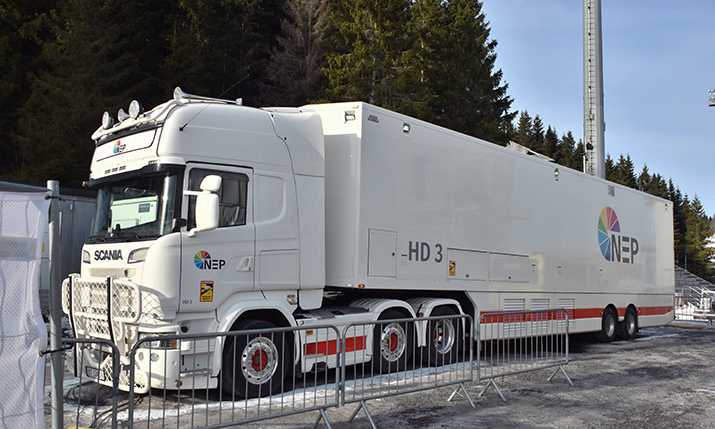
NEP Norway’s HD3 Unit covering the Holmenkollen ski jumping
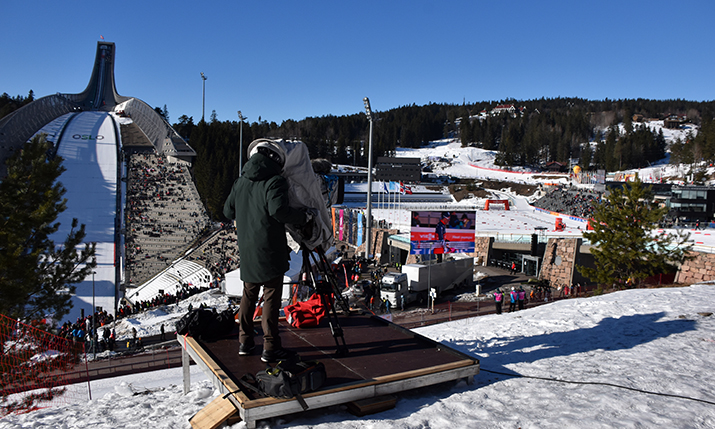
Camera offering a wide angle of the Holmenkollen complex
Wirecam high above the main arena tracking the Women’s 50km Cross Country race
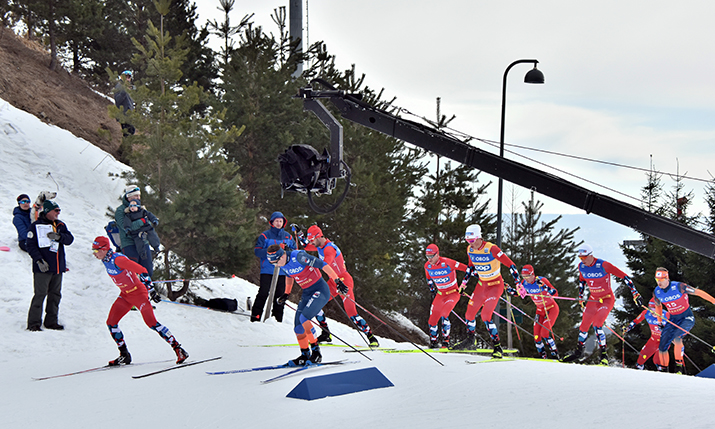
Jib capturing the skiers in the Men’s 50km Cross Country race
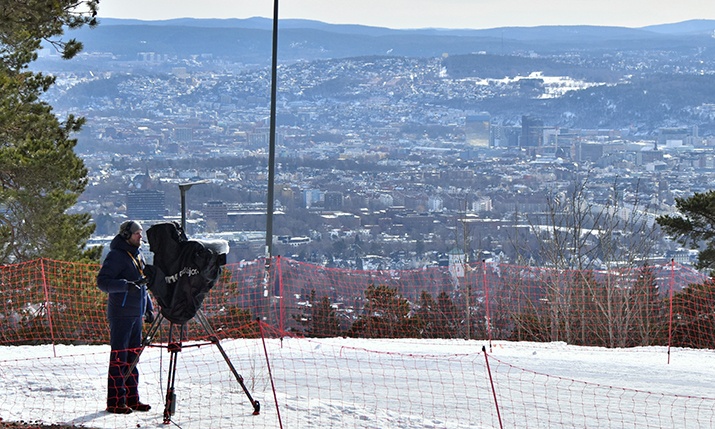
NRK camera high above Oslo awaiting the Cross-Country skiers
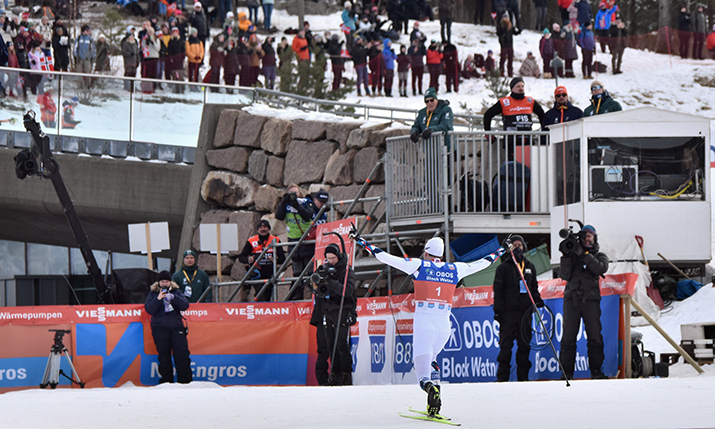
Victory for Norway’s Jarl Magnus Riiber in Sunday’s Nordic Combined 10km race
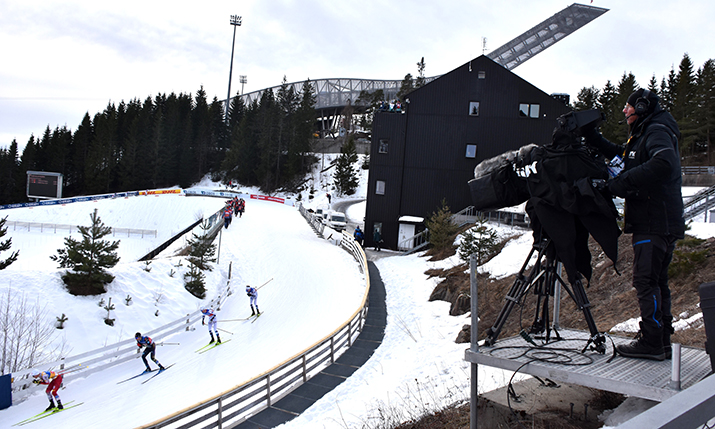
NRK camera capturing the final turn before the drop down to the main arena in Sunday’s Men’s Nordic Combined race
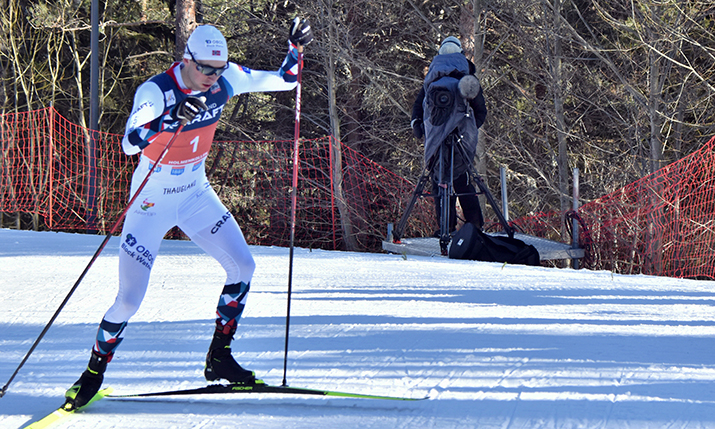
Capturing the action in Saturday’s Men’s Nordic Combined 10km race
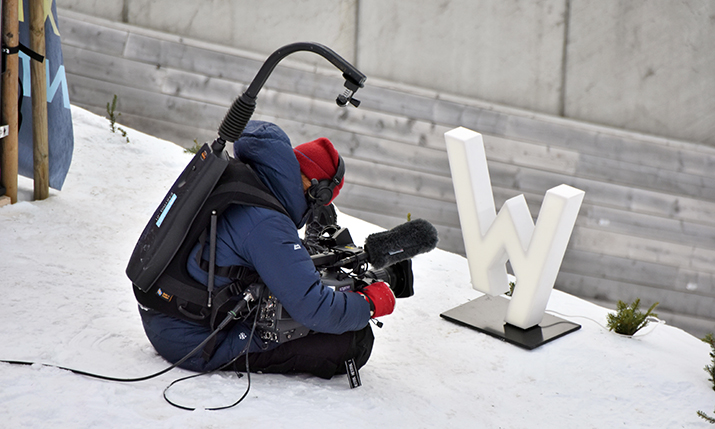
Framing the RAW AIR ski jumping competition logo
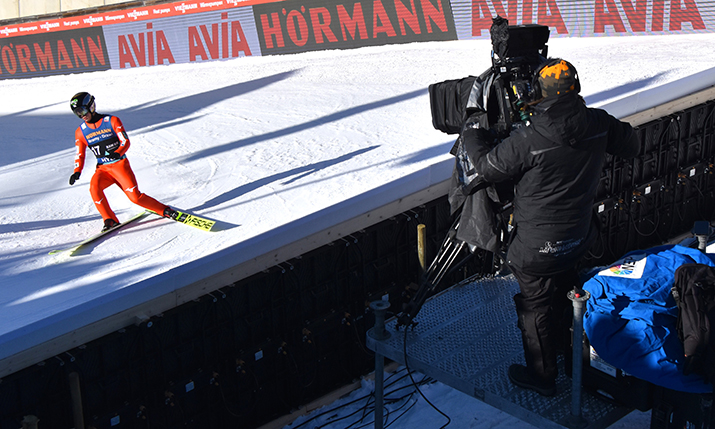
Head-on camera capturing ski-jumpers pulling up
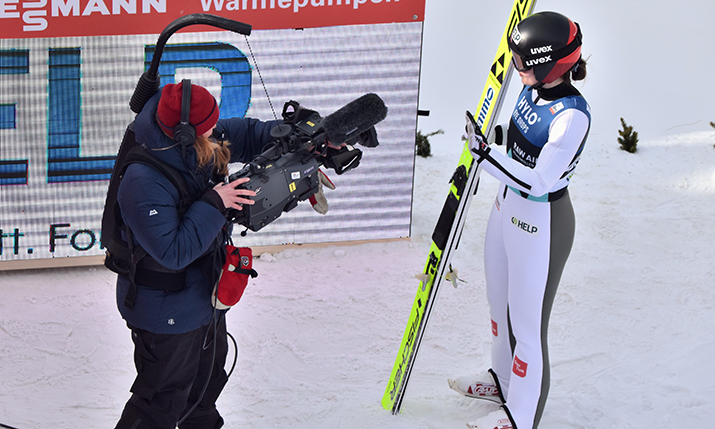
Handheld camera capturing skiers after their jump
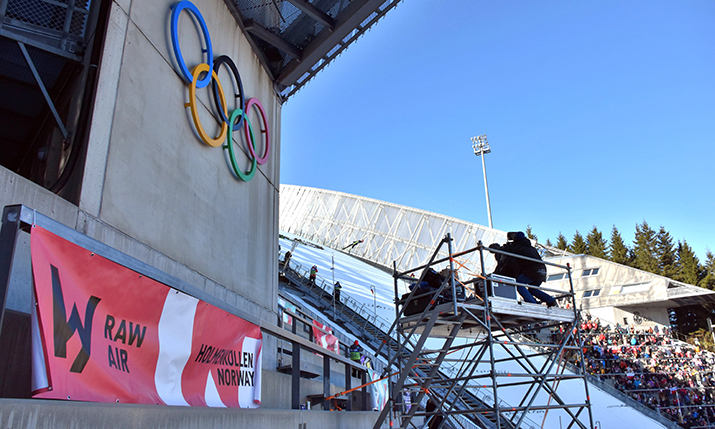
Capturing the flight of the ski jumper on the Holmenkollen HS134 hill
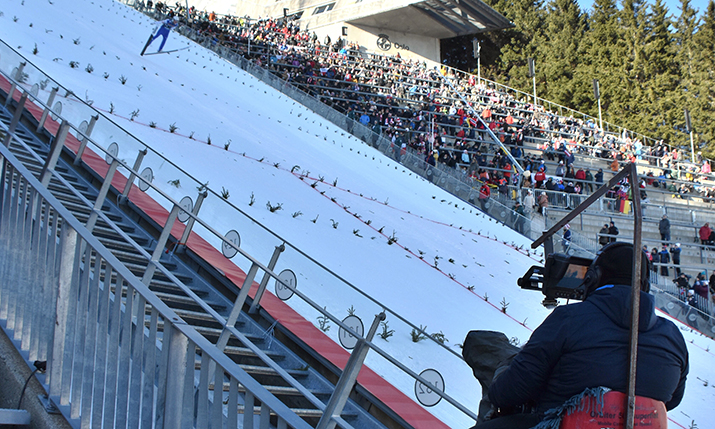
NEP Norway camera for NRK at the landing point on the Holmenkollen hill
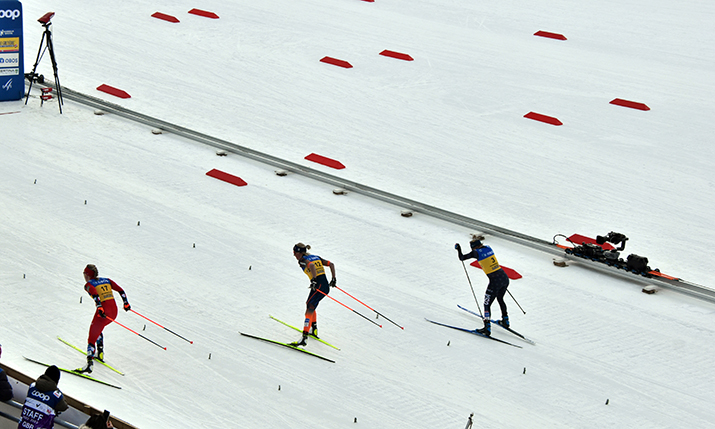
Sprint finish for the first FIS World Cup Women’s 50km Cross Country race, captured by NRK railcam
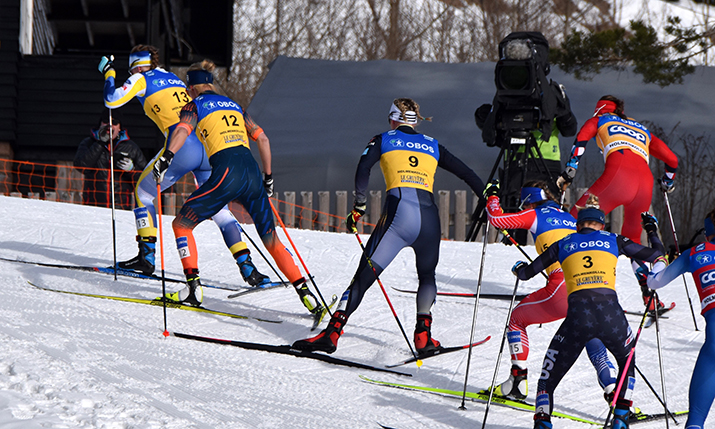
Steep climb in the Women’s 50km Cross Country race
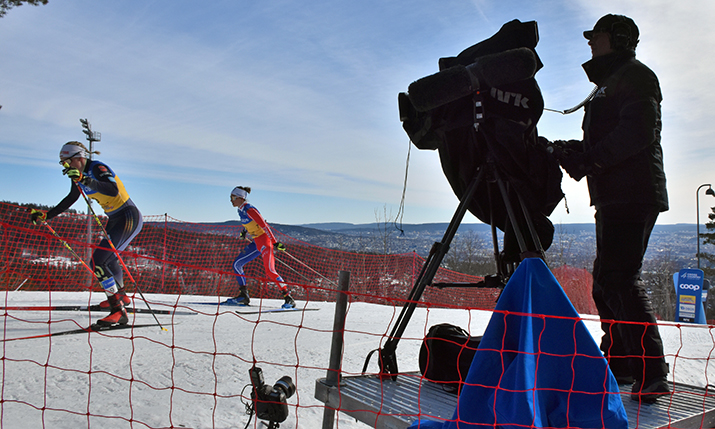
NRK camera capturing Sunday’s Women’s 50km Cross Country race
Newton Nordic stabilised remote head on NRK railcam tracking the Women’s 50km Cross Country race
